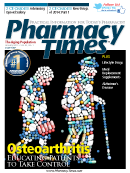Publication
Article
Pharmacy Times
Challenges Pertaining to Elderly Patients
Author(s):
Dispensing medications for elderly patients can be challenging and complex. Many barriers may prevent elderly patients from taking their medications as prescribed. These impediments include cognitive impairment, cultural differences, poor medical knowledge, fixed budgets, and lack of social support, all of which can make it difficult to accurately assess elderly patients and their medical needs. Drug-related problems and adverse events are prevalent in the elderly. There are also challenges associated with frequent hospitalization. However, the impact of such complications may be lessened by the community pharmacist. Many barriers can be overcome by establishing strong pharmacist-patient relationships, monitoring drug use to ensure proper use, and creating a familial atmosphere in your pharmacy.
The Case
MD is a 78-year-old woman who is a returning customer to your pharmacy. She stops by your pharmacy at least once a week to refill medications, shop in the store, or ask you medical questions at the consult window. She lives alone: her husband died a few years ago and her children live out-of-state. MD is not Internet-savvy or up-to-date on basic technology. She relies on the pharmacy and medical team for her health-related information. Today, MD stops by to refill her cholesterol medication. You notice that she is refilling the prescription early. You also note other medications in her profile that she has recently refilled late or early.
When you walk over to counsel MD, you notice she is not acting like herself and appears disorganized. You ask MD how she is doing, and she asks you to repeat the question. She is unable to explain how she takes her medications or what conditions they treat. You briefly review MD’s adherence issues, acknowledge that she is on multiple medications, and conclude that she is an ideal candidate for a medication review. You ask MD if she would be interested in bringing in all of her medications and reviewing them with you for proper use. MD is curious, and happy to have your attention. She sets up an appointment to meet with you tomorrow.
To prepare for the session, you pull up MD’s following pharmacy profile so you can compare it with what is in her “brown bag”:
- Atorvastatin 40 mg, once daily
- Lisinopril 5 mg, daily
- Alendronate 70 mg, weekly
- Omeprazole 20 mg, daily
- Magic mouthwash compound, as directed
MD arrives the next day for the appointment. She empties her brown bag, and you notice these additional medications:
- OTC famotidine 20 mg, twice daily
- Calcium citrate 500 mg, twice daily
- Adult multivitamin with iron, once daily
- OTC Advil (ibuprofen) 200 mg, as needed
- Aspirin 81 mg, daily
- OTC Tylenol PM, as needed for sleep
- Vitamin D 1000 IU, 3 times daily
As you review the medications for accuracy, MD tells you in confidence that due to a limited budget and insecurity about maintaining her independence, she is not always able or willing to seek medical advice. She has not renewed her eyeglass prescription in over 2 years and says she has trouble reading the newspaper and other fine print. MD also acknowledges that she has been having difficulty hearing, and finds it hard to remember information that she doesn’t immediately write down.
You ask MD about her health-related goals, and she says she wants to maintain a satisfactory quality of life at home and stay out of the hospital. You briefly discuss her diet, some nonpharmacologic ways to help prevent memory loss, and the concerns you have about her hearing and vision. MD is on many OTC medications and has not disclosed them to her providers. She has a limited budget and seems to be spending a significant amount of money on her medications. It is important to note that MD has never been officially diagnosed with some of the issues she is treating with OTC medications. MD should be referred for proper diagnosis and treatment.
MD explains that she no longer sees a primary care physician because hers recently retired. You give MD a list of providers in the community and offer to make an appointment for her because she is alone and needs assistance. Because of this brown bag session, MD is very interested in participating in the medication therapy management session you offer as a follow-up, and she thanks you for your help.
Dr. Drury works as a clinical pharmacy specialist in Chicago, Illinois, and Milwaukee, Wisconsin. She earned her doctor of pharmacy from Midwestern University College of Pharmacy. Her blog, Compounding in the Kitchen, appears on www.PharmacyTimes.com.







